Posted by William Maxwell on 2021 Oct 28th
6mm GT Load Development
Author's note: My custom 6mm GT rifle build article can be found here.
Load development for a new cartridge can often be analogous to a science project and usually requires a lot of experimentation before an optimal formula is found. The 6mm GT is a fairly new cartridge without much load data in the major loading manuals; however, the cartridge designers, George Gardner of GA Precision and Tom Jacobs of Vapor Trail Bullets, have published a loading formula, which is a great place to start.
Taken straight from GA Precision's website
Efficient Case Design: Optimized case nearing 100% capacity with 34-35.5 grains of Varget.
Velocity: 3020-3080 fps with 103-105 grain bullets and approx 3000 fps with 115's.
Before we get into load development, let's take a look at the components I used.
POWDER
Powder choice was easy, kind of. Since I could not find Varget, I used Vihtavuori N140, and Shooter's World Precision, since these were similar to Varget. Various forums and load developers stated that StaBall 6.5 and H4350 also work great in a 6mm GT.
BULLETS
Bullet choice was pretty easy as well. I already had a case of 105 grain Lapua Scenar-L and a couple of cases of 108 grain Berger BT Target in the reloading room, so we went with those. The ultimate goal was to use 109 gr Berger Long-Range Hybrid Target. Still, we could not source this bullet at the beginning of load development, though we recently got some and worked up a load with it. (More on this later)
BRASS AND PRIMERS
For brass cases, there are 2 ½ options: you have the budget option from Hornady ($0.75/piece) and the premium option ($1.25/pc), Alpha Brass. As a bonus option, Alpha made the "GAY TIGER" stamped brass exclusively sold through GAPrecision.net, so naturally, that's the option I chose.
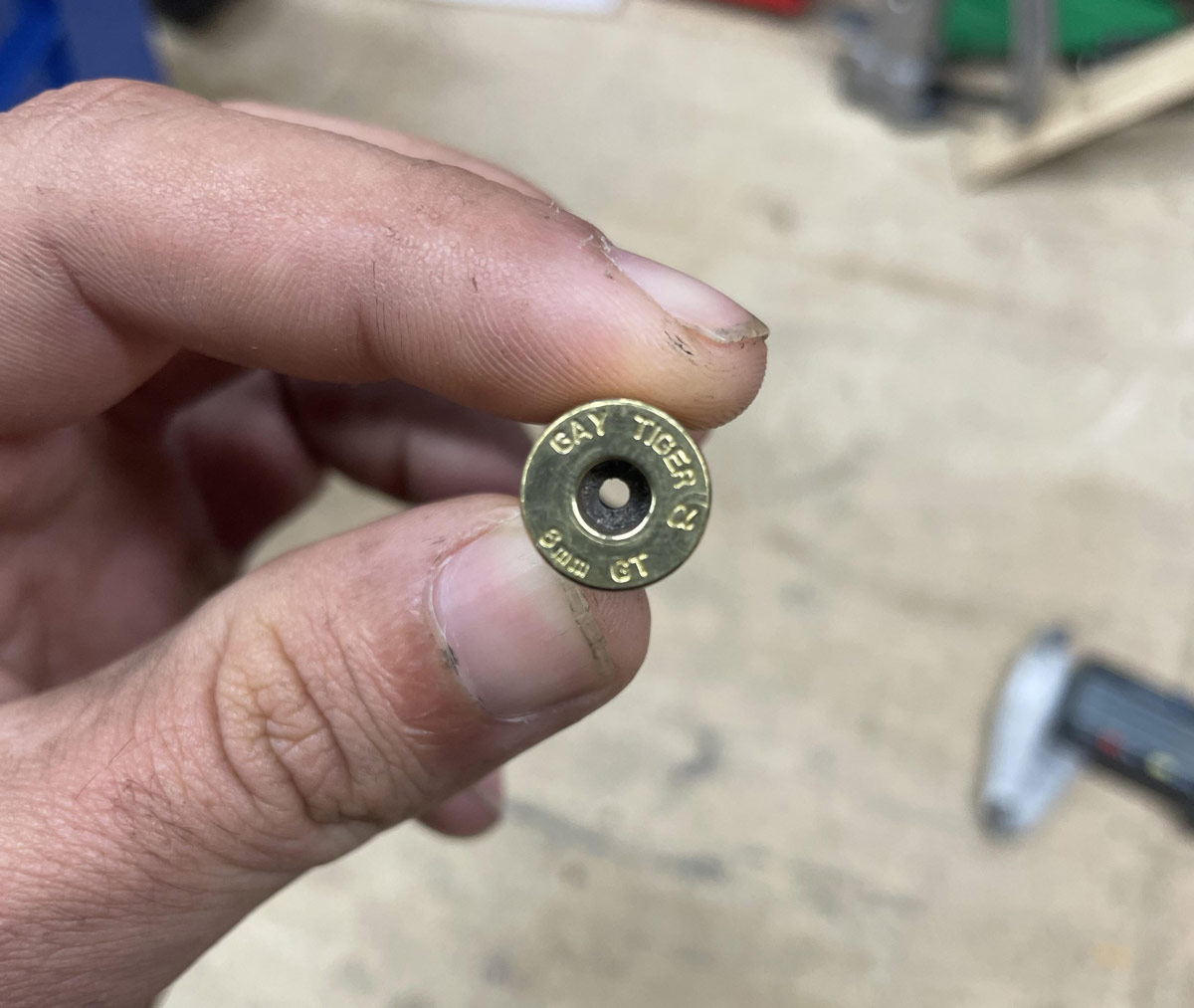
Primers were an easy decision for me as well. I just went with what I had a plethora of on hand, CCI 450 Small Rifle Magnum. Other good options would be Federal GM205M, CCI #41, and CCI BR4. We are aware of the status of primer inventory at the time of writing (SEPT' 21) so use whatever Small RIFLE primers you can get your hands on.
LOAD DEVELOPMENT
Before we get to the development process, let's knock a couple of things out first:
Disclaimer: This article is for informational purposes only; all load data is for my rifle specifically. Before loading your ammo, reference published load data from bullet and powder manufacturers.
Handloading equipment used:
Press: RCBS Rock Chucker
Dies: RCBS 6mmGT MatchMaster set
Powder Measurer: Fx120i with AutoTrickler v. 2.5
Primer: Lee Bench Primer
Brass Prep Station: RCBS Prep Station
Annealer: Annealeez
Tumbler: Frankford Arsenal Quick N EZ Tumbler w/ Lyman corn cob media
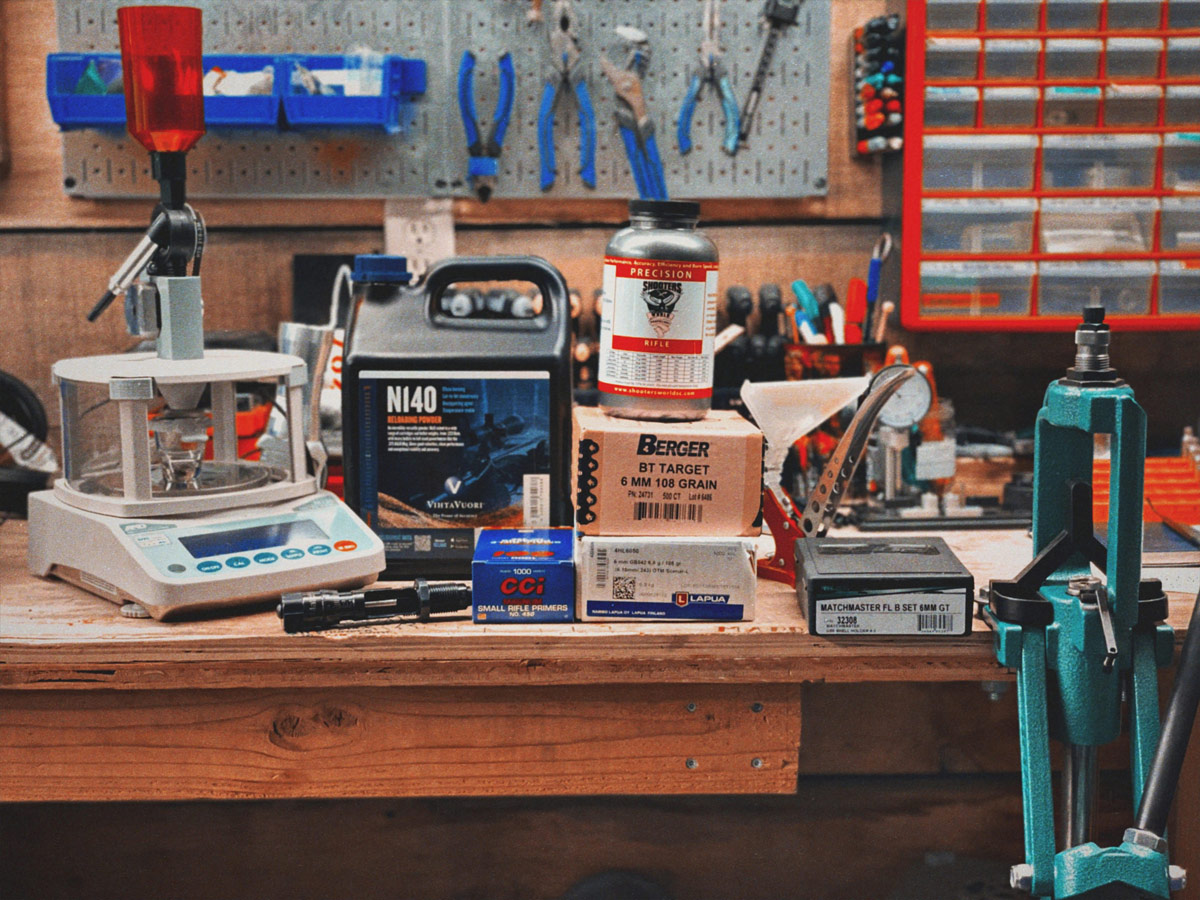
Before testing my loads, I did a barrel break-in/fire-forming. I loaded 50 rounds with a safe load of 38.0 grains of StaBall 6.5 behind 105-grain scenar-L while running cleaning patches every couple of rounds.
Sidenote about barrel break-in: everyone's opinion on barrel break-in is different; if you don't have your ritual, consult your barrel/rifle manufacturer for their suggested break-in method.
After breaking the barrel in, I ran a couple of 10 round velocity ladders with the Berger 108 grain BT Target, what some refer to as the Satterlee Method.
For this, you take your max charge for the selected powder; in this case, it was 34.6 grains of N140 and Shooters World Precision (to be written as 'SWP") and backed off 2 grains. You then load up ten rounds in 0.2-grain increments back up to the max charge and shoot them over a chronograph to identify stable velocities over multiple charges, otherwise known as flat spots or the mythical velocity node. Here's what I found:
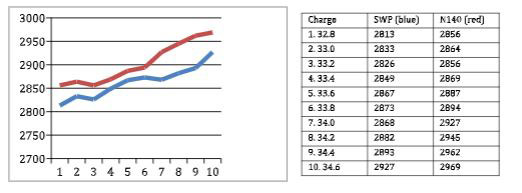
ANALYZING THE DATA
So what do we do with these numbers? In theory, loading up rounds in these nodes should produce tight standard deviations (SD) and small extreme spreads (ES) of velocities, leading to small groups. However, this is a tiny sample size.
Looking at these numbers, I realized pretty early on that the Shooters World Precision would not reach the velocities I was looking for (2975-3000 fps) with the 108-grain bullet with a safe powder charge. I stopped load development with this powder and chose to use N140 until I could get my hands on Varget and 109 grain Bergers.
There were three nodes for me to work with here: 32.8-33.2, 33.6-33.8, and 34.4-34.6. If my primary goal were to shoot tiny groups at 100 yards, I would have gone with the larger node with the slower speed. But this load is for PRS competition, shooting 1-2 MOA targets out to 1000 yards, so while I do need consistency with small SDs and ESs, I also need good velocities.
In this case, I'm lucky. There's a node at the max charge that is right around the target velocity. I chose to go with the middle of that node and load up with 34.5 grains of powder.
From there, a seating depth has to be established. There are a few ways to do this; the easiest would be using the Hornady OAL gauge with a modified case. Unfortunately, I do not have one, so I have to do it the good old "guess and check" way.
This could be almost a whole article in itself, but the quick and dirty of it is as follows:
Take a prepped case and a fresh bullet with some case lube on the ogive, put it in the chamber, and close the bolt. Open the bolt and hope the case comes out with the bullet in it. Measure the bullet from the cartridge base to ogive. Subtract 0.020" from that measurement, and that's your starting seating depth. Of course, you should repeat that process 3-5 times and take an average. Still, I planned on shooting several different seating depths to find the right one for my chamber, so I started with a CBTO, or cartridge base to ogive, of 2.010."
Something to note, different bullet shapes like to be jumped from or jammed into the barrel's lands at different distances. Also, factory barrels typically have a longer throat so getting anywhere near the lands is impossible if you're feeding from a magazine.
Pro Tip: if you have vertical stringing in your groups, that's typically a velocity or body position issue. These inconsistencies can be addressed by finding your velocity node and improving body mechanics. If you have horizontal stringing, that is often a harmonic issue or improper trigger manipulation. Adjust your seating depth, and work on trigger manipulation.
INITIAL TESTING
Every once in a while, you get lucky on your first try. The 108 gr bullet loaded with 34.5 gr. of N140 at a CBTO of 2.009" turned out to be a winner. It gave me a velocity of 2976 fps with an SD of 7 fps and ES of 19 fps. It also yielded a 0.353" group.
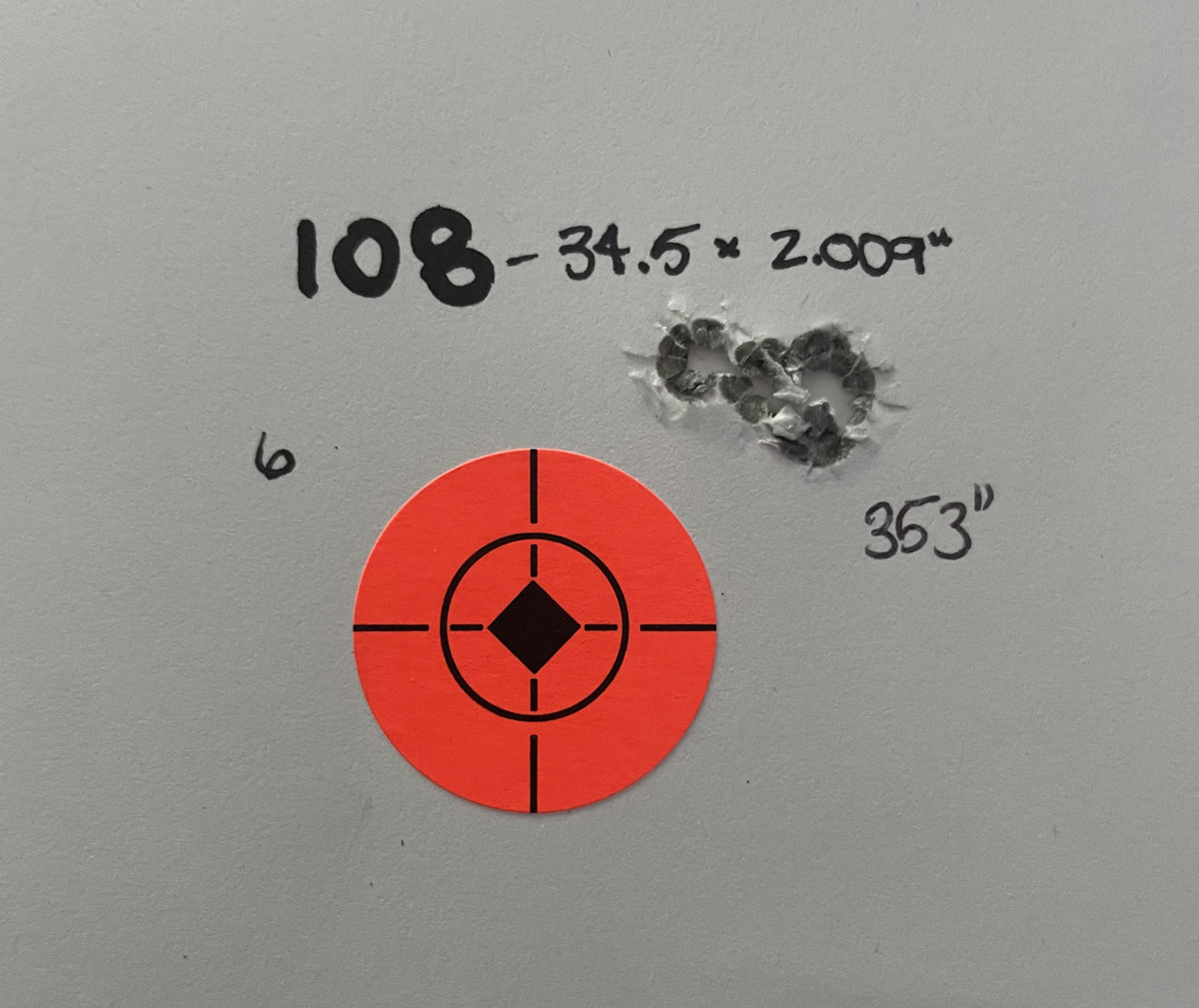
Things got interesting with the 105 gr Lapua bullets. After establishing a charge weight of 34.8 grains of N140, I achieved velocities near the 3000 fps marks and SDs between 4-6, but I was not grouping consistently. Time to look at CBTO or cartridge base to ogive. Starting at 2.010", I shot 5 – 5 round groups in 0.005" increments (2.008", 2.004", 1.998", 1.993" and 1.988"). The results blew my mind. Three of the five groups were under 0.400", and they were all under 0.500". Ultimately I decided on a CBTO of 2.000".
So those WERE my 2 loads:
-108 Berger/34.5 N140 @ 2.010” CBTO flying at 2975 fps
-105 Lapua/34.8 N140 @ 2.000” CBTO flying at 3000 fps
Fortunately for me, I stumbled upon a 500-count box of 109 grain Berger LRHT and a couple of pounds of Varget. After going through the load development process, I settled 34.6 grains of Varget behind the jump tolerant 109s loaded at a cartridge overall length (COAL) of 2.600". They're flying at 2990 fps with an SD of 3.
And the groups? They are fine.
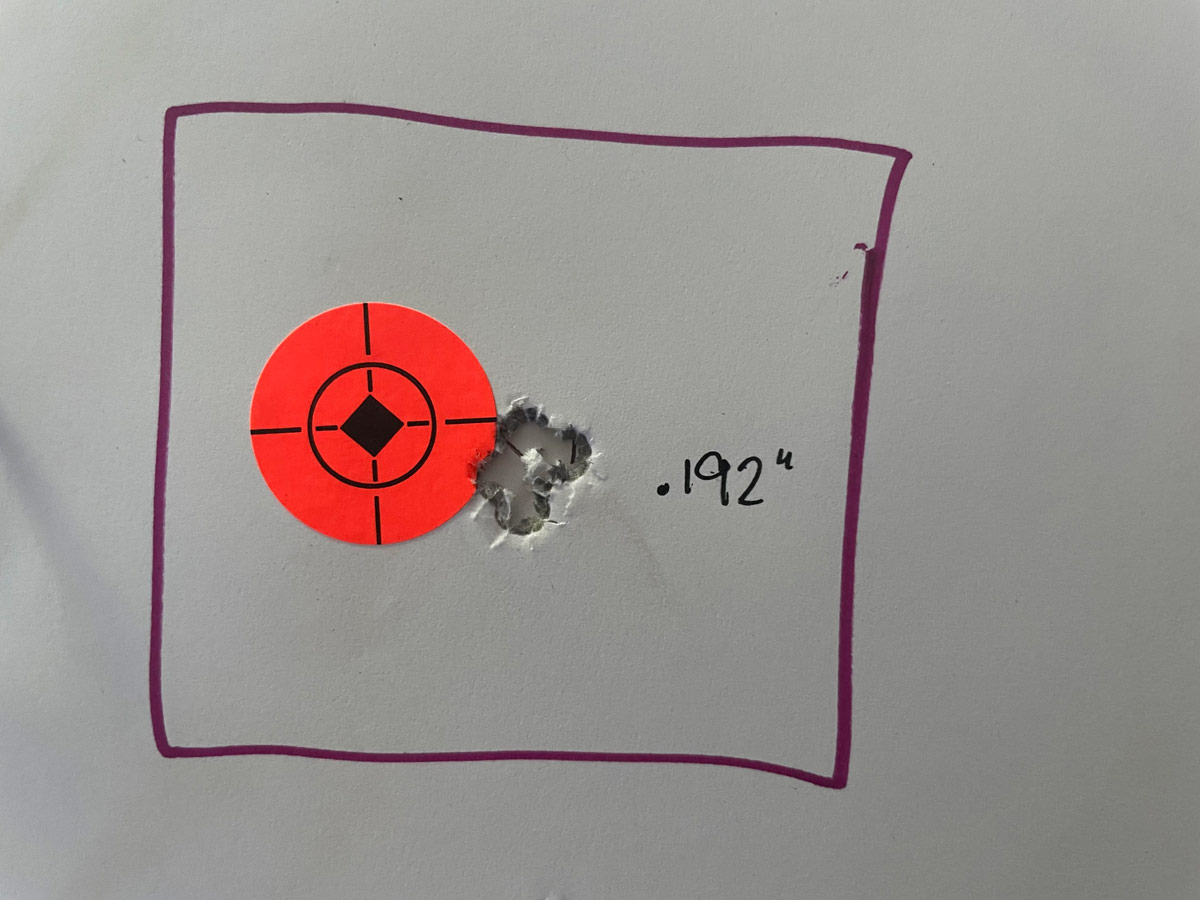
CLOSING
This is not the end all be all process for load development, but it works for me. There are plenty of other options, including the popular Optimal Charge Weight (OCW). My suggestion is to find what works for you and go with it, but don't expect it to go easy every time, and don't be afraid to experiment. I will be experimenting with new powders and bullets as I find them in the off-season, so keep your eyes open.
ABOUT THE AUTHOR
William Maxwell currently serves in the United States Army. After returning from his first deployment in 2015, he started building firearms and focused heavily on pistol and carbine training. In 2018 he fell into the rabbit hole of precision rifle shooting. He spends his free time competing, reloading, editing digital content, and writing. He can be reached via Instagram @maddmaxxguns.


 CAD
CAD
 Euro
Euro
